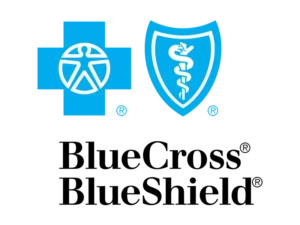Transcranial Magnetic Stimulation for Adolescents: Is It Right for You?

TMS therapy for teens is considered to be an “innovative” mental health treatment. What this means is that it’s a new, creative method of treating issues such as depression. But what exactly is TMS therapy for teens? And is it suitable for your child?
Rates of mental health conditions in teens have steadily been on the rise in the last decade, and the COVID-19 pandemic added fuel to this fire. In fact, the statistics on mental health conditions are so startling that the American Academy of Pediatrics has declared a national mental health emergency.
Another issue to highlight is that many teenagers can be resistant to traditional forms of mental health treatment – in fact, approximately 30% of those who receive treatment. This means that these forms of treatment don’t give these teenagers relief from their symptoms. When this happens, a teen may feel even more hopeless about their future and ability to recover. Additionally, families can experience significant distress when they believe that a loved one can’t get better.1
The good news is that there are alternative, innovative options for treating mental health conditions that don’t respond to traditional forms of therapy – such as transcranial magnetic stimulation (TMS).
If you’re concerned about your child’s mental health and responsiveness to treatment, a mental health professional can discuss the suitability of TMS for their needs. This article can also help by covering:
- Why TMS therapy can be useful in treating teen mental health conditions
- How TMS works
- The benefits of TMS
- The potential drawbacks of TMS
- How effective TMS is in treating adolescent depression
- If TMS works for treating teen anxiety and OCD
- How to find a TMS provider

TMS Therapy for Teens
The Food and Drug Administration (FDA) approved the use of transcranial magnetic stimulation for adults back in 2008. However, it has only recently been approved for treating adolescent mental health conditions, specifically in 2024. Yet it was only a matter of time before the FDA approved the use of TMS in teens – there’s too much evidence to suggest that it works for reducing mental health symptoms not to.2
For instance, one study showed how TMS activates areas of the brain responsible for mood regulation in teens, resulting in the growth of new connections. Additionally, TMS therapy for teens may be particularly effective in adolescents who have received other forms of treatment for mental health conditions but have shown no signs of improvement. In other words, TMS may work for teens with treatment-resistant depression, anxiety, obsessive-compulsive disorder (OCD), and post-traumatic stress disorder (PTSD).3
How TMS Works
TMS therapy is a non-invasive brain stimulation treatment that uses high-frequency magnetic pulses to stimulate the areas of the brain responsible for mood management. TMS is called “non-invasive” because it doesn’t involve surgery or cutting the skin in any way. Therefore, it is relatively painless and doesn’t cause discomfort to the patient.
TMS works by placing a cap or helmet on the head, which contains a magnetic coil that sits close to the scalp. During a therapy session (typically around 20-30 minutes), this coil delivers hundreds of magnetic pulses to the brain, kickstarting weakened neurons in the brain back into action. Additionally, when TMS is used to repeatedly deliver electromagnetic pulses to the brain to help with certain conditions, it’s called “repetitive TMS” or “rTMS.”4
The reason why TMS works for teens with mental health conditions is that the neurons that these pulses target may be underperforming. Therefore, “reactivation” of these neurons can provide relief from symptoms – even in teens who have not responded to other forms of treatment.
Additionally, how TMS is delivered may depend on a teenager’s unique symptoms or needs. For instance, if a teenager has anxiety, a trained professional will use the TMS machine to target the right-hand side of the brain. However, if a teen has depression, pulses will be targeted towards the left-hand side.
Transcranial Magnetic Stimulation Benefits
TMS therapy has been shown to have a wide range of benefits. However, it can help to know exactly what these benefits are when deciding if TMS is the right choice for you or your child. The following points highlight these benefits.
Benefits of TMS:
- TMS is effective: To begin with, TMS has been proven to be effective in treating a variety of mental health conditions – even if these conditions have proven to be resistant to other treatments. As a result, many families can feel more secure about the potential positive outcomes of a teen’s mental health issues.5
- TMS is safe: The use of TMS for treating adolescent mental health issues has recently been approved by the FDA. This means that parents and teens can rest assured that TMS therapy is safe, that it works, and that TMS providers are confident in what they’re doing.
- TMS is flexible: TMS sessions are relatively short – varying between 20-30 minutes long – so they can be fit into a busy schedule. This is important for teens who attend school, have a hectic social life, or want to be able to continue with their daily routine with minimal disruption.
- TMS is non-invasive: Even though the idea of TMS can be scary to many people, it’s non-invasive. This means that there are no cuts, surgeries, or medications required. There should be minimal discomfort during treatment, meaning no anesthesia is required, which can ease concerns.
- TMS Has Minimal Side Effects: TMS doesn’t typically interact with medications, but it’s always good to talk to your healthcare provider about any medications you’re taking and how TMS could affect these.
Like with any therapy, it’s important to understand that TMS could have potential side effects. We cover these next to ensure that you feel aware of all possible eventualities in treatment.
TMS Therapy Side Effects
Whereas TMS therapy is approved by the FDA for use in teenagers, there are a couple of potential drawbacks to be aware of. A mental health professional can talk you through these possible side effects and whether they could impact you or your loved one.
TMS therapy side effects include:
- Physical side effects: The risk of physical side effects is minimal, but it may be good to note that, in rare circumstances, TMS can cause slight scalp discomfort, lightheadedness, or headaches. It’s also not suitable for people with neurological conditions such as epilepsy. If you’re worried about any of these side effects, a mental health professional can talk to you about whether TMS is suitable for your needs.
- Length of therapy: Even though TMS sessions are relatively short, so are a flexible option for fitting into busy routines, the duration of treatment could be lengthy. The length of a course of treatment may depend on a teen’s symptoms and needs. For instance, someone with mild to moderate symptoms may not require as many sessions as someone with severe issues. However, the average length of treatment is daily sessions for approximately four to six weeks. This may require a degree of commitment and flexibility.
- TMS may not be a “cure”: TMS has been shown to be effective in treating mental health conditions, including treatment-resistant ones. However, it still may not be a permanent cure – especially if people have severe mental illnesses. Many people may end up getting “top-up” treatment sessions to maintain their results. Additionally, TMS may not be suitable for certain mental health conditions, such as bipolar disorder or psychosis.6
TMS for Adolescent Depression
The National Institute for Mental Health reports that approximately five million adolescents in the United States aged between 12 and 17 have experienced at least one episode of major depression. This number is highly concerning, considering the impact that depression can have on a teen’s life. To put it simply, depression can cause hopelessness, loss of interest, fatigue, and physical health issues. It can seriously impact a teen’s quality of life and outcomes for the future if left untreated.
Not only has TMS been shown to be effective in treating adolescent depression, but early results also demonstrate that TMS may work better when the patient is younger. In other words, it may be better able to create new pathways in the brain when the effects of depression are in their early stages. Additionally, TMS therapy may be especially successful for treating more moderate to severe depression in teens.7
TMS for Resistant Depression
TMS is effective for the treatment of depression in general, but it offers hope for teenagers who have previously not responded to mental health treatment. There are a number of potential reasons why a teen might not respond to traditional forms of treatment, such as personal factors, bias about talk therapies, and severity of symptoms. However, TMS can bypass these factors. In fact, many people who receive TMS therapy find that their symptoms reduce for months after treatment stops – potentially for even up to a year. Moreover, top-up treatments for prolonging results are also an option.8
Further, studies show that when TMS is used to complement traditional forms of therapy, the outcomes can be even better – with one study showing a remission rate of up to 66%. 9
TMS for Anxiety and OCD
Obsessive-compulsive disorder (OCD) is characterized by intense obsessions – especially intrusive thoughts and behaviors – which interfere with daily life. While many people with OCD respond well to traditional mental health treatments, some people, unfortunately, don’t.
For those who don’t respond to treatment for OCD, TMS has proven itself to be a valuable alternative. For instance, evidence suggests that TMS works to reduce compulsive behaviors and intrusive thoughts, and improve peoples’ opinions about their symptoms on self-report measures.10
Additionally, TMS has also shown positive outcomes in the treatment of anxiety disorders. According to the National Institute of Mental Health, nearly 32% of teenagers have at least one anxiety disorder, and roughly 8% of these teens have a severe impairment. Many of these teens may have a resistance to traditional therapies due to factors such as sleep issues and diet, but novel treatments such as TMS can help.11
For example, one study showed promising effects of TMS therapy in treating people with generalized anxiety disorder (GAD). Further, TMS’s ability to strengthen brain connections may be especially useful for people with comorbid anxiety and depression, as it can relieve co-occurring symptoms of both.12
Finding TMS Providers
There’s often a sense of fear about the unknown when first choosing a form of treatment for your or a loved one’s needs. For this reason, it’s important to choose a TMS provider with expertise and experience. Mission Connection’s team of TMS-trained professionals can help.
We understand the benefits of TMS for many mental health conditions, especially for people who haven’t responded to traditional forms of therapy. However, we equally understand that TMS is not for everyone. If you have any questions or concerns about transcranial magnetic treatment for teens, our empathic team is more than happy to help.

When to Seek Support for Teen Mental Health Treatment
If you’re concerned about a teen’s mental well-being – or if they haven’t shown a positive response to mental health treatment – Mission Connection is here to help.
We continuously endeavor to provide personalized treatment plans for a teen’s needs, taking their opinions into consideration each step of the way. Our residential and outpatient programs can incorporate TMS into treatment if this is suitable for your child. However, we also offer a variety of other evidence-based therapy options, including cognitive behavioral therapy (CBT) and eye movement desensitization and reprocessing (EMDR). Contact us today if you would like to learn more about what we offer.
References
- Gordon, C. T., & Melhem, N. M. (2023). Treatment-resistant depression in children and adolescents. Child and Adolescent Psychiatric Clinics of North America, 32(3), 405–420. https://doi.org/10.1016/j.chc.2023.02.003
- O’Brien, E. (2024, March 27). FDA clears NeuroStar TMS for treatment of MDD in adolescents. Psychiatric Times. https://www.psychiatrictimes.com/view/fda-clears-neurostar-tms-for-treatment-of-mdd-in-adolescents
- Narang, P., Madigan, K., Sarai, S., & Lippmann, S. (2019). Is Transcranial Magnetic Stimulation Appropriate For Treating Adolescents with Depression? Innovations in Clinical Neuroscience, 16(9-10), 33. https://pmc.ncbi.nlm.nih.gov/articles/PMC7009324/
- Oxford Health NHS Foundation Trust. (2020, March). RTMS patient leaflet (long version). Oxford Health NHS Foundation Trust. https://www.oxfordhealth.nhs.uk/wp-content/uploads/2020/03/OH-253.20-rtms-patient-leaflet-long-version.pdf
- Avery, D. H., Holtzheimer, P. E., III, Fawaz, W., Russo, J., Neumaier, J., Dunner, D. L., Haynor, D. R., Claypoole, K. H., Wajdik, C., & Roy-Byrne, P. (2006). A controlled study of repetitive transcranial magnetic stimulation in medication-resistant major depression. Biological Psychiatry, 59(2), 187–194. https://doi.org/10.1016/j.biopsych.2005.07.003
- Mayo Clinic Staff. (2023, April 7). Transcranial magnetic stimulation. Mayo Clinic. https://www.mayoclinic.org/tests-procedures/transcranial-magnetic-stimulation/about/pac-20384625
- Sigrist, C., Vöckel, J., MacMaster, F. P., Farzan, F., Croarkin, P. E., Galletly, C., Kaess, M., Bender, S., & Koenig, J. (2022). Transcranial magnetic stimulation in the treatment of adolescent depression: A systematic review and meta-analysis of aggregated and individual-patient data from uncontrolled studies. European Child & Adolescent Psychiatry, 31(10), 1501–1525. https://doi.org/10.1007/s00787-022-02021-7
- Stern, A. P. (2020, October 27). Transcranial magnetic stimulation (TMS): Hope for stubborn depression. Harvard Health Blog. https://www.health.harvard.edu/blog/transcranial-magnetic-stimulation-for-depression-2018022313335
- Somani, A., & Kar, S. K. (2019). Efficacy of repetitive transcranial magnetic stimulation in treatment-resistant depression: The evidence thus far. General Psychiatry, 32(4), e100074. https://doi.org/10.1136/gpsych-2019-100074
- The Psychiatrist. (2023). Right versus left prefrontal transcranial magnetic stimulation for depression. The Psychiatrist, 47(3), 67-70. https://www.psychiatrist.com/jcp/right-versus-left-prefrontal-transcranial-magnetic/
- Roy-Byrne, P. (2015). Treatment-refractory anxiety; definition, risk factors, and treatment challenges. Dialogues in Clinical Neuroscience, 17(2), 191. https://doi.org/10.31887/DCNS.2015.17.2/proybyrne
- Pérez, L., & Lacerda, G. A. (2023). Transcranial magnetic stimulation and its role in treating depression: A review. Journal of Affective Disorders, 316, 1-10. https://www.sciencedirect.com/science/article/abs/pii/S0165032723000782













